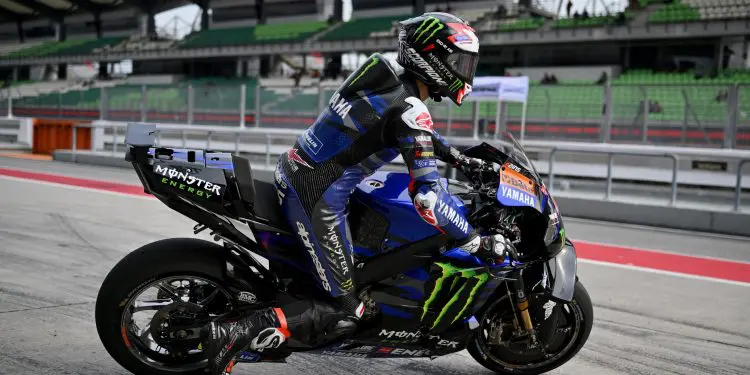The Japanese Grand Prix proved to be another disheartening chapter for Alex Rins, as the Catalan rider, despite his relentless effort, could only manage a 16th place finish, falling short of earning any points. Starting from 19th on the grid, Rins’ performance highlighted Yamaha’s ongoing challenges—issues that appear far from resolved, with no quick fix in sight. If Fabio Quartararo’s post-race mood was dampened by fuel problems, Rins, too, found little solace.
“It was a really tough race; I don’t know what to say. I’m devastated because I rode all the laps with a heart rate of 190 beats per minute, giving my all to get this,” Rins expressed, revealing the physical toll and disappointment after a grueling race where Yamaha’s struggles continued.
Rins provided a detailed breakdown of his race, noting that the early laps showed promise as he experimented with a setup inspired by their Austrian approach, aiming to improve braking stability and rear-wheel control. However, as the race progressed, his hopes faded. With ten laps remaining, rear tire wear became unmanageable, making it impossible for Rins to control rear-wheel spin. “Even on the straight and exiting Turns 9 and 10, the bike was sliding in a straight line. We need to find a solution because this is not the right direction, and I am not happy with the work we are doing.”
His comments go beyond frustration with one race; Rins highlighted a deeper issue with Yamaha’s machinery. The M1’s inline four-cylinder engine, long overdue for an upgrade, is becoming increasingly uncompetitive, and the much-anticipated switch to a V4 engine still appears distant. “We won’t have the V4 for the last few races. If everything goes well, maybe we can have it halfway through next season, but it’s just a project, and we need something before then,” Rins stated, conveying a sense of urgency and desperation.
Rins pointed out that his closest competitor remains his teammate, Fabio Quartararo, who shares the same equipment. “Fabio was clearly faster than me this weekend, but in the first part of the race, he was closer than in the Sprint. However, when the tire wore out, my race was over. All three Yamahas were suffering from the same problems, although perhaps Fabio here managed to keep the rear wheel in contact better during braking, or he had a better setup than me, as he has been riding this bike for more years.”
The disparity in Yamaha’s performances has sparked debate about the true potential of the M1. Quartararo’s sporadic successes, such as his performance at Misano, raise questions about whether Yamaha’s competitiveness is track-dependent or if the occasional good results mask deeper issues.
“Misano, for Fabio, is a bit like Austin for me: he won the title there and he’s always been very fast,” Rins commented. “It might be his favorite track, but it’s also true that we did one race there, then a test, and another race, so for me, the Misano result wasn’t really representative. The harsh reality is that when [Luca] Marini overtook me, I wasn’t able to follow him.”
At Motegi, Yamaha’s woes continued. Rins, although spared from the fuel consumption issues that plagued Quartararo, still found himself in a desperate situation, indicating that the problems are multifaceted and not limited to one component.
“Problems with the fuel? No, I just did one lap trying to save, pulling the clutch on the straight to save a bit of fuel,” Rins explained. “We’re going through a critical moment. It’s not because we’re not working; we are, but it’s frustrating to see how you give everything and things don’t go well. I have an average of 190 beats per minute in each race, to finish last, 40 seconds behind the leader. It’s difficult like that, but we’re giving it our all and we have to be a bit patient. Can the electronics be the key? I don’t know. We can’t find what we’re missing.”
The situation for Yamaha and Rins remains precarious as the season advances. With no immediate solutions in sight and the long-awaited V4 engine still in development, the team faces a crucial period ahead. For now, Rins and Yamaha must navigate this challenging phase, hoping for breakthroughs that might offer a glimmer of improvement in their performance.







